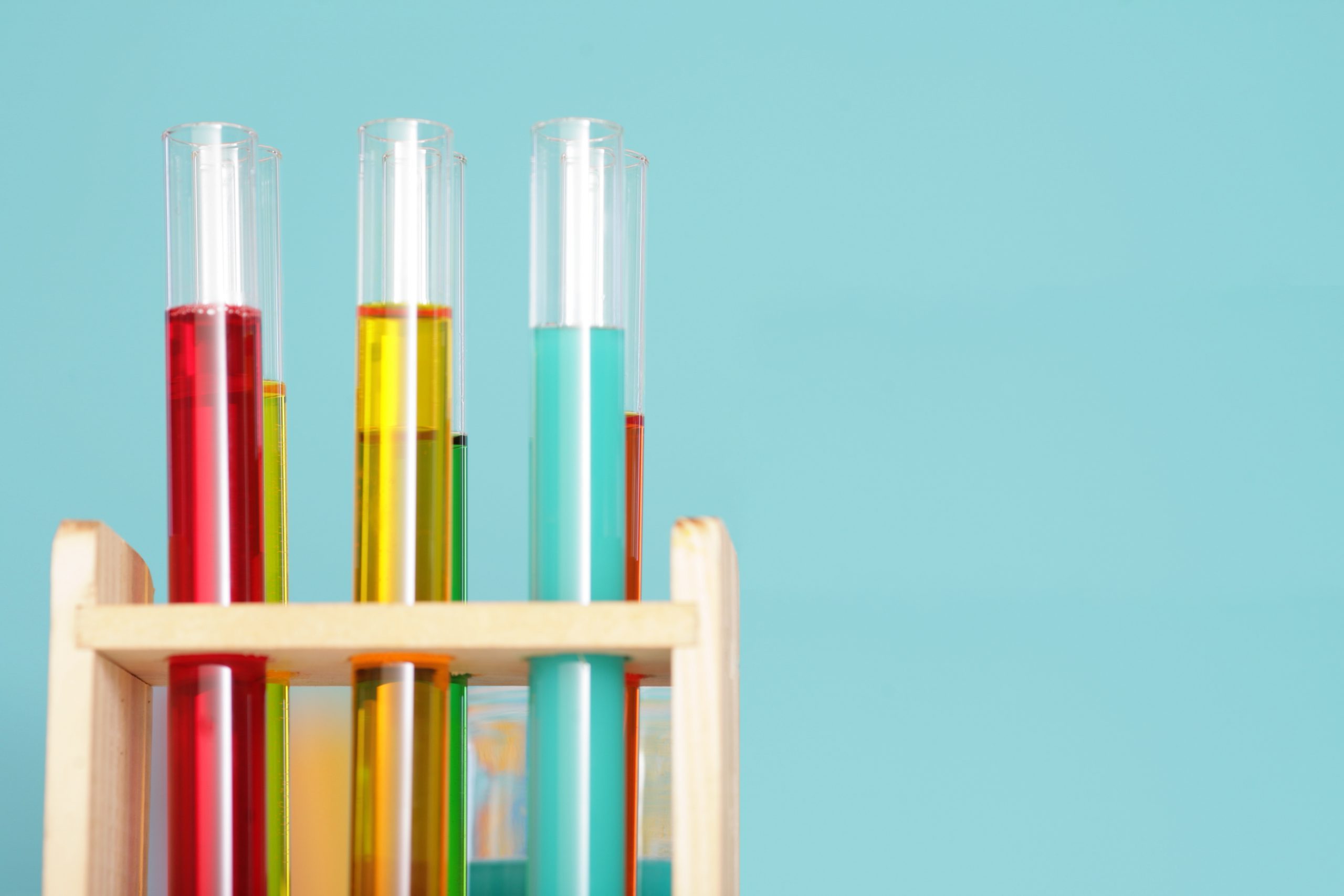Is your urine colour normal?
Everything you need to know about your urine colour...


Your urine colour can tell you a lot, but is your usual colour normal? Here's everything you need to know...
Ever wondered if your urine colour is normal? “Just like we should use the daily health-check opportunity of looking at our bowel movements, our urine can also give us insight into our health,” says clinical nutritional therapist Yvonne Bishop-Weston, who works with Vitabiotics.
“If you see blood in your urine you should check in with your GP straight away,” says Yvonne. “But also look out for other changes, such as urine which is foamy, dark coloured, cloudy, milky white, smelly or just different to usual.”
And that’s not all. “Increased frequency of needing to go for a pee, struggling to go despite drinking enough, or pain, are all symptoms which should be checked out,” says Yvonne. “But small daily changes can also bring messages about our health.”
Looking down into the toilet bowl every time you visit the loo can sometimes set off a lot of worry, but odd colours are more normal than you think!
What does urine colour mean?
Just a quick glance at your urine colour could alert you to a health concern. “Urine is a great marker for health and wellbeing,” says Dr Ross Perry, GP and medical director of Cosmedics UK. “It looks predominantly at your hydration, but can also reveal whether there are any medical conditions, such as diabetes, an infection, kidney disease or even cancer.”
The normal colour for wee should be a medium to light, straw-like yellow colour, which means you’re well hydrated. A slightly darker yellow shows you’re healthy, but could probably do with drinking a bit more water.
Parenting advice, hot topics, best buys and family finance tips delivered straight to your inbox.
“Urine usually has a very mild smell but, if this gets stronger, it could be a sign of a kidney problem, diabetes or a urinary tract infection, but usually it’s due to not drinking enough water,” adds Yvonne.
“A number of things can change the colour of our urine, including some foods. Beetroot tends to turn it light pink and if you have a large portion of carrots it can be more orange. Colourings in foods, some vitamins and medications can also change the colour of urine.”
Is it good if your urine is clear?
Not really. If you are fit and healthy, then your urine colour will probably be pale yellow, but not completely clear. “The kidneys, which produce urine, are the body’s filtration unit," says Stuart. “When the body is generally healthy urine is pale yellow to gold.”
If you urine has no colour at all, it could be a sign you are drinking too much water. This means you are flushing out the vital vitamins and minerals before your body has had a chance to use them.
Drinking more alcohol than usual? This could be a reason why you are going to the toilet more regularly and your urine is clear.
“Alcohol is a diuretic, meaning that it forces water out of the body and makes it more difficult to rehydrate afterwards,” says Dr Rosh, aesthetics practitioner and medical director of Cheshire aesthetics and wellness clinic, KLNIK
“It does this by telling the kidneys to make more urine than normal. So, you urinate more. If you are unable to replace these fluids, then this will lead to dehydration.”
READ MORE: The benefits of water: Do you know how much water to drink every day?
Why is my urine dark yellow?
If your urine colour is similar to honey, you’re probably not drinking enough water.
“Darker than usual urine can indicate dehydration, so take the reminder to drink more,” says Yvonne. “Many of us get through the day and then realise that other than a coffee or tea we have barely drunk any water.”
You may have other symptoms, too. “Not drinking enough can hinder concentration, lead to constipation, increase the chances of urinary tract infections (UTIs), and even reduce energy levels,” says Yvonne. In fact, many women experience headaches from dehydration.
The good news? It can be reversed quickly. “Drink more water and you should notice a change the next time you pee,” adds Dr Perry.
Hate the taste of plain water? You’re not alone – 23% of Brits say it tastes “funny”, found a survey by Britvic and Robinsons. “Use a filter,” says Yvonne. “This not only removes heavy metals, which may have negative health repercussions, but also makes it taste better.”
Yvonne also suggests:
- If you don’t like plain water then add cucumber, lemon, lime, ginger or make unsweetened fruit teas. Leave them to intensify overnight, drink at room temperature or add some hot water.
- Leave out your day of water at the start of the day so you can see how you are doing.
- Use a water reminder app to help you remember to drink your water and so you can space out your drinks. This is easier on the kidneys than drinking large amounts at once.
- Eat plenty of veg and some fruit. This adds to your fluid intake and tops up your nutrient status.
- Drink more water during and after exercise.
Strange urine colours that could be normal
Artificially or naturally coloured foods and drinks are often the reason for abnormally coloured wee.
Green: This is usually caused from eating something of the same colour, such as asparagus. But if you haven’t been around any strongly-coloured food, you should contact your doctor.
Blue: This could be a rare genetic disease called blue diaper syndrome, which turns your urine blue.
Pink or red: Eaten beetroot? “This can turn your urine pink,” says Dr Boleti. “Taking new medication can also turn urine red.” It could be a sign of cystitis, a UTI, kidney infection, a prostate problem (in men) or a tumour.
“Visit your GP if you notice blood in your urine no matter what. “While it’s unlikely to be cancer, your GP can give further tests to rule it out and other serious causes.”
Orange or neon yellow: If you’ve been taking beta-carotene or vitamin B pills, then that could be the reason why your wee is bright orange or yellow! These are water-soluble vitamins, so they get flushed out of the body when your body has excess vitamins in its system.
“Some supplements can change the colour of your urine, but it’s not harmful,” says Yvonne. “For example, taking a multi-vitamin containing B vitamins can turn urine a bright yellowy green colour, which looks alarming but is simply the excess being excreted.”
It can also mean you’re dehydrated. However, if the colour doesn’t change back when you stop using the supplements or drinking more water, see your GP. “This may be a sign you have liver problems,” says Stuart.
Urine colour chart
Want to check out how healthy you are today? Check out this full urine colour chart by the Cleveland Clinic:

Image: The Cleveland Clinic
If you or your little ones are experiencing any of the abnormal colours along with other unusual symptoms, it's worth checking with a health professional to make sure everything is alright.
Think you have an issue? “When you see your GP or practice nurse be ready to provide a urine sample so have a drink of water before you leave to ensure you can provide a sample when there,” says Yvonne.
“A number of potential issues can be detected using a urine dipstick in the consultation. If a UTI is suspected, it’s best for your sample to be sent away to a lab to be cultured. This can pick up things not detected on the dipstick and identify the specific bacteria and treatment needed.”
“If you have had a change in frequency of how often you need to pass urine, while you wait for your appointment keep a fluid and frequency dairy,” says Yvonne. “Be sure to include how much you drink each day, how often you go during the day and night and if you are if it is a small or longer pee.” Just don't keep your diary in the bathroom, here's why.
Cloudy, dark and foamy urine
Dark brown or black: If your urine is the colour of dark syrup or brown ale, this could be a symptom of liver disease like hepatitis and cirrhosis. It happens after the build-up of the breakdown of old red blood cells that leaks into urine. So if it persists then it’s best to go and have a chat with your doctor.
This could also be caused by melanoma skin cancer, but it’s extremely rare. “You’re normally more likely to spot a melanoma from checking your skin,” says Dr Perry. Contact your GP without delay.
Foamy: This could just be a case of physics! If you urinate very quickly, it can create bubbles in the toilet bowl. However, it could also mean a dietary or kidney problem, so it’s best to contact your doctor if it persists.
Cloudy: Milky white or cloudy urine? It could reveal an excess of protein in the urine. “This may be a sign of cystitis, a UTI or a kidney infection,” says Stuart. “It would usually be accompanied by pain or irritation on passing water.” See your GP as soon as possible.
What colour is urine when kidneys are failing?
Milky white urine can be a sign of excess protein in the urine, which can mean your kidneys are having problems filtrating. But if you have a red tinge to your urine, it could due to blood cells entering your urine.
“The most common symptom of kidney cancer is blood in the urine, also known as haematuria,” says Dr Katia Boleti, a consultant medical oncologist who works with Kidney Cancer UK.
“This may come and go and it’s worth noting that not everyone with kidney cancer will have haematuria. Sometimes you won’t be able to see it, so any change in the colour of your urine should be checked out.”
“Having said this, it’s important to remember that most people with blood in their urine do not have kidney cancer,” says Dr Boleti. “Blood in the urine is more likely a sign of an infection, kidney stones, prostate problems or sometimes bladder cancer.”
Worried? “You should visit your GP if you notice blood in your urine no matter what,” says Dr Boleti. “Even if you have no other symptoms, it’s only happened once or it’s just a small amount, arrange a blood test with your GP to check for signs of a kidney problem.”
Frequent urination: how much urine is normal?
“Most of us will need to pass urine six or seven times a day (in 24 hours),” says Yvonne. “But between five and 10 times is still considered normal. If you need to go more than this it could be a sign of a UTI, diabetes, prostate problems (in men) or irritable bladder syndrome. If frequent urination persists, see your GP. Keep a fluid and frequency diary while you wait for your appointment.”
Pregnant? “This also alters how often we need to pee,” says Yvonne. You may need to go more often as the baby presses on your bladder.
Going through the menopause? “Frequency is more common due to a weaker pelvic floor,” says Dr Perry. “Up to two times in night is OK, but if it’s more than that, see your GP.”
It can also depend on how much you are drinking. “Frequency of urination can be exacerbated by drinking caffeinated drinks,” says Dr Perry. “If you drink 1.5 lites of fluid a day then you can expect to go 4-5 times in the day at least.”
https://youtu.be/voTvLYdLb60
Bladder misbehaving? It could be caused by trying to ‘push’ out every last drop. “It’s completely normal to retain between 30-100mls of urine after going to the toilet,” says Sanature Pro Vivo’s expert Roseanna Grace. “Don’t ‘push’ this out. We have this because the bladder doesn’t empty fully – and that’s normal.”
Struggling to pass any urine for a few hours? “Seek urgent medical help,” says Stuart Gale, owner and chief pharmacist at Oxford Online Pharmacy.
“This may be a sign of sepsis or a blockage in the bladder or urethra.”

Faye M Smith is a Senior Health And Lifestyle writer working across Woman & Home, Feel Good You, Woman’s Own and Woman magazine. Having gained an NCTJ postgraduate diploma, Faye has worked for 15 years in journalism, covering a range of lifestyle topics for companies including the BBC, Press Association, News UK and Hachette.